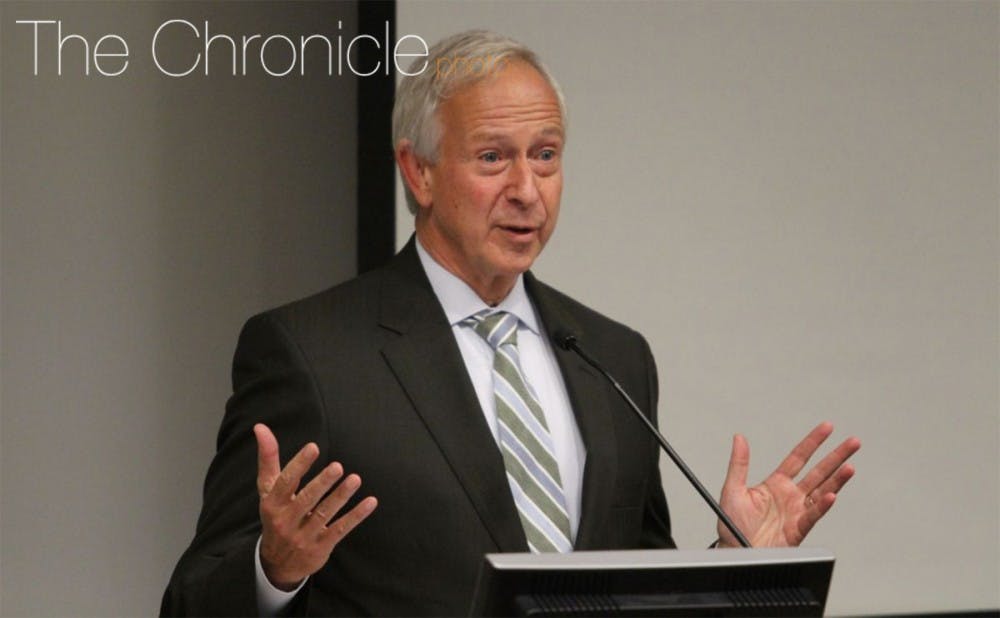As the University prepares to announce a new president, many are left to wonder—what does the job actually entail?
After Brodhead announced his plans to retire in June 2017, the Board of Trustees appointed Jack Bovender, Trinity ’67, Graduate School ’69 and vice-chair of the Board of Trustees, to lead the search committee, which also consists of students, faculty, alumni and other Trustees. In May, Bovender said that the Board wants a president "who can build on our strong foundation and take us yet further, while still embodying Duke’s core values of excellence, vision and integrity."
John Burness—visiting professor of the practice in the Sanford School of Public Policy and former senior vice president for public government affairs and public relations—noted the importance of the president in keeping the University running smoothly, adding that the position is not an easy one.
“I think some challenges are managing a complex social environment outside of the university, helping the university prosper and supporting faculty and students in the work they do,” he said.
However, he said that the president influences students' lives more indirectly than directly "in a place as complex as Duke."
In an interview with The Chronicle, Brodhead explained that the job of the president requires constantly addressing a wide range of topics, which his staff helps brief him on.
"It’s like channel surfing," he said. "You switch from one subject to another to another, each of which requires your total attention."
He noted that he considers the ability to interact with a wide range of people not only a crucial part of the job, but also a perk.
"If you didn't like meeting thousands and thousands of people, the job would really not suit you," Brodhead said.
Despite the president's responsibility to be the public face of the university, Burness noted that the position is not just for show—he or she is responsible for the leadership of the university, directing and putting policy in action and serving as a leader of higher education.
Brodhead affirmed this, noting that his job requires him to make sure every action from the University maintains a "Duke standard."
"I think about this for everything," he said. "Every piece of writing, every communication has to be at the standard of a great university."
He said that he has had presidents at other universities call him to ask for advice about navigating difficult terrain.
A university president must also be able to understand all of the inner workings of an academic institution and the relationship of the university to the rest of society, Burness explained.
With an ever-changing political and cultural landscape, Burness said that the president must remain a steadfast representative of the institution’s values.
“A lot of it depends upon timing,” Burness said. “I think what you tend to see is different emphases in different times with different culture and societies embedded over time.”
Although Brodhead will soon hand the reigns over to a new leader, Burness noted that he has faith Duke will find a strong president to propel the University forward.
“I’m very confident that Duke will be and is an incredibly attractive presidency,” he said. “There’s a very strong search committee, and the Board has a good track record of recruiting people for this job.”
Claire Ballentine contributed reporting.
Get The Chronicle straight to your inbox
Signup for our weekly newsletter. Cancel at any time.

